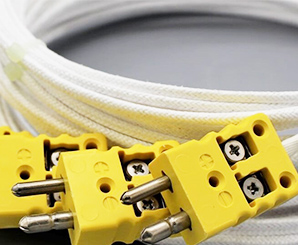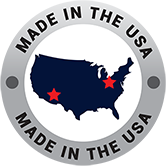How to Calculate Thermocouple Voltage: A Guide to Accurate Temperature Measurement
Thermocouples generate voltage through the Seebeck effect, a principle where a temperature difference between two dissimilar metals produces an electromotive force (EMF). This voltage is proportional to the temperature gradient, making thermocouples reliable for industrial and scientific temperature measurements.
A thermocouple consists of two key junctions:
- The measuring junction (hot junction), exposed to the target temperature.
- The reference junction (cold junction), kept at a known temperature for comparison.
Since a thermocouple does not measure absolute temperature directly, the reference junction must be accounted for to obtain accurate readings. This is where thermocouple reference tables, such as those from the National Institute of Standards and Technology (NIST), come in. These tables convert measured millivolt outputs into temperature values. However, real-world variations require cold junction compensation (CJC) to correct for ambient fluctuations, ensuring precise readings.
How to Calculate Thermocouple Voltage
To determine the temperature from a thermocouple, you need to calculate the voltage difference (VD) between the measuring and reference junctions. This involves using NIST Thermocouple Reference Tables and applying the correct formula for your thermocouple type.
Step-by-Step Calculation
- Measure the Thermocouple Output Voltage (VD)
- Use a high-precision voltmeter to measure the output voltage.
- The voltage (VD) represents the temperature difference between the measuring and reference junctions.
- Determine the Reference Junction Temperature (Tref)
- If using cold junction compensation (CJC), this step is automated.
- If measuring manually, use a high-accuracy thermometer to record the reference junction temperature.
- Find the Corresponding Millivolt Value for Tref
- Locate Tref in the NIST thermocouple reference table.
- Identify the millivolt equivalent for the reference temperature.
- Calculate the Effective Thermocouple Voltage (Vt)
- Formula: Vt=VD+Vref
- Example (Type K Thermocouple):
- Measured voltage (VD) = 3.41 mV
- Reference junction (Tref) at 22°C corresponds to 0.87 mV
- Vt = 3.41 mV + 0.87 mV = 4.28 mV
- Convert Voltage to Temperature
- Locate Vt (4.28 mV) in the NIST Type K reference table.
- The corresponding temperature is 100°C (212°F).
This method ensures accurate temperature readings by compensating for the reference junction.
Voltage-to-Temperature Conversion
Once you have determined the effective thermocouple voltage (Vt), you need to convert it into a temperature reading. Thermocouple reference tables, such as those from NIST, provide voltage-to-temperature mappings for various thermocouple types.
Why Cold Junction Compensation (CJC) is Needed
Since thermocouples measure the temperature difference rather than absolute temperature, CJC is essential. If the reference junction is not fixed at 0°C, its voltage contribution must be accounted for. Most modern thermocouple readers automatically apply CJC for accurate readings.
Voltage-to-Temperature Reference Table (Common Thermocouple Types)
Example Conversion Using the Table
If you measured Vt = 20.644 mV from a Type K thermocouple, checking the NIST Type K reference table shows that it corresponds to 500°C.
By using these tables and applying cold junction compensation, you can ensure accurate temperature monitoring for industrial and laboratory applications.
Common Errors & Calibration Tips

Thermocouple voltage readings can be affected by external factors and calibration issues. Here’s how to identify and correct errors.
Common Errors in Thermocouple Voltage Measurement
- Cold Junction Compensation (CJC) Errors
- If CJC is not correctly applied, reference junction fluctuations lead to incorrect readings.
- Solution: Use a compensated reference junction or automated CJC systems.
- Electrical Noise & Interference
- High-voltage equipment and electromagnetic interference (EMI) can distort thermocouple signals.
- Solution: Use shielded cables and proper grounding to minimize interference.
- Thermocouple Aging & Drift
- Over time, thermocouples go bad due to oxidation, contamination, and extreme temperatures.
- Solution: Periodically calibrate thermocouples against a NIST-traceable reference.
- Poor Wiring & Loose Connections
- Loose or corroded connections introduce resistance, affecting voltage readings.
- Solution: Use secure thermocouple connectors and check for wiring integrity.
Calibration Tips for Accurate Readings
- Use a Calibration Furnace or Ice Bath
- Check thermocouple output at known temperature points (e.g., 0°C ice bath, 100°C boiling water).
- Compare Against NIST-Traceable Sensors
- Use a certified reference sensor to verify thermocouple accuracy.
- Apply Correction Factors
- If a thermocouple consistently reads higher or lower, adjust readings with an offset correction factor.
Applications of Thermocouple Voltage Calculation
Accurate thermocouple voltage measurement is essential for temperature-critical industries, ensuring safety, performance, and regulatory compliance.
Industries That Rely on Thermocouple Accuracy
- Aerospace & Defense → Jet engine monitoring, turbine control, and spacecraft heat shielding.
- Industrial Manufacturing → Steel mills, kilns, furnaces, and glass production.
- Medical & Pharmaceutical → Sterilization, lab calibration, and cryogenic storage.
- Energy & Power Generation → Gas turbines, nuclear reactors, and renewable energy systems.
- Electronics & Semiconductors → PCB soldering, semiconductor fabrication, and precision lasers.
Cleveland Electric Labs: Experts in Thermocouple Solutions
With over a century of experience in high-precision temperature sensing, Cleveland Electric Labs provides custom thermocouple solutions across aerospace, industrial, medical, and energy sectors. Their NIST-traceable calibration services and advanced thermocouple technology ensure reliable temperature measurement in demanding applications.
For precision thermocouple solutions, consult Cleveland Electric Labs today.



